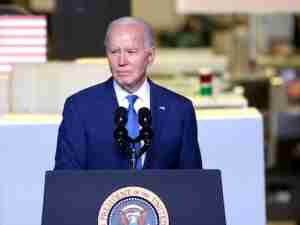A two-day conference named in honor of Gil Carmichael, Senior Chairman of the Board of Directors for the Intermodal Transportation Institute at the University of Denver, was sponsored by the Boston-based National Corridors Initiative on January 28-29. The conference brought together industry leaders to study and discuss the transportation needs of today's global economy, and the conference results will be forwarded to 2008 presidential candidates in hopes that they will pay more attention to our nation's transportation crisis.
Carmichael, a long-time industry spokesperson, and former Federal Railroad Administrator, told the attendees that while the 19th century provided great strides in transportation with the development of an intercontinental railroad system, and the 20th century produced a grand achievement in the form of the Interstate Highway System, 21st century leaders have virtually ignored the impact of a global economy on our nation's transportation infrastructure.
'Unfortunately,' he said, 'government has decided to ignore the realties and conduct business as usual. Ethanol, they say is the 'magic bullet.' I would argue that this is a questionable strategy at best in terms of economics, energy supply and environmental impact. It would impose a gigantic hidden cost upon the American consumers. The same thing is true of the new 'blue-ribbon study commission,' which proposes a gas tax increase of up to 40 cents to restore our crumbling highways to their previous condition. Neither of these solutions addresses the increasing problem of freight and passenger traffic congestion that is stifling our economy today.'
Carmichael suggests that a better solution for 21st century transportation problems exists in the expansion of the nation's railroad network. 'The Interstate Highway System was originally designed to connect all cities of 100,000 population to a national system,' he said. 'That was a great concept. Then the politicians decided to add local routes to serve urban rail commuters, however, and today these commuter routes are the segments with the worst gridlock and in need of the greatest repair. Meanwhile, while the politicians have slept, there has been an intermodal freight network that has evolved in the past quarter of a century. It is safer, faster, more reliable, more energy-efficient and more economically viable than what preceded it. North American railroads have spent huge sums of money to build and operate the freight segment of this intermodal network.'
Carmichael said that the best way to upgrade our nation's freight and passenger transportation system is to build or upgrade about 20,000 miles of freight corridors capable of train speeds in excess of 90 miles an hour, double track them, with grade separations, and equip them with GPS systems. This network could then be augmented by as much as 10,000 miles of conventional routings ' a 21st century transportation system he calls 'Interstate II.'
'This kind of new transportation system would provide a highly efficient network of steel stretching from Mexico City to Montreal,' he told the conference. 'The railroads have already begun the building process and further capital contributions should come from public investments that could take the form of cost-sharing specific projects, which already is occurring, as well as tax credits, or tax-exempt financing secured by public agencies. It is important, however, that advocates of passenger transportation understand an important truth: in dealing with our transportation needs, they must recognize the related issues of energy supply and global warming impacts and deal with them appropriately.'
Carmichael identified five priorities policy makers must address to use the nation's freight railroad system to develop passenger corridors:
- Conduct a ruthlessly objective market analysis to understand potential ridership, capital costs and operating needs.
- Build the strongest corridors fi








